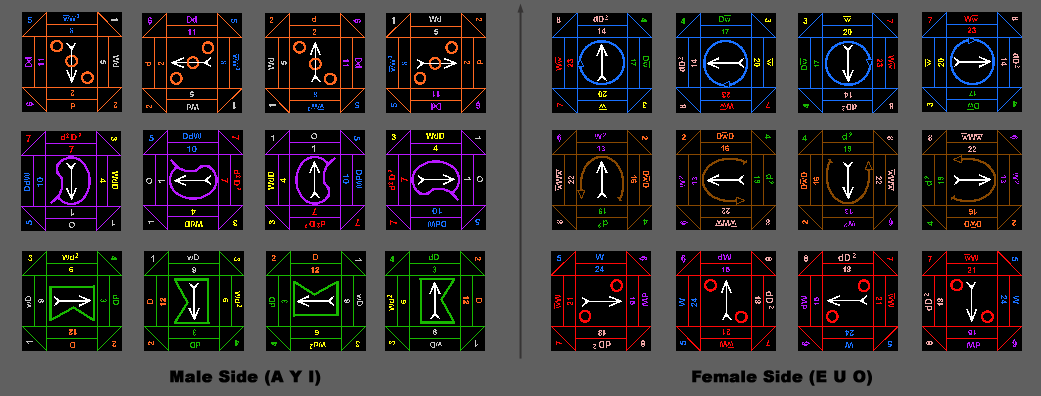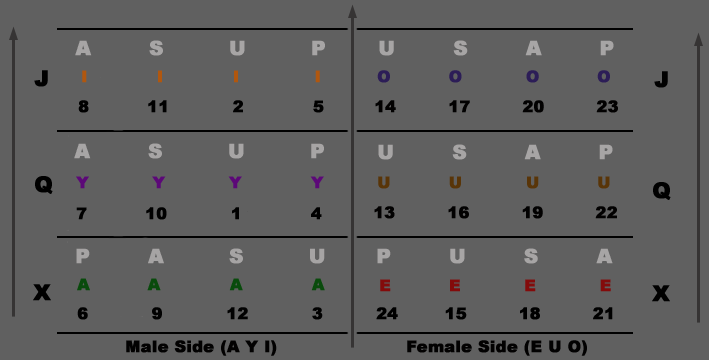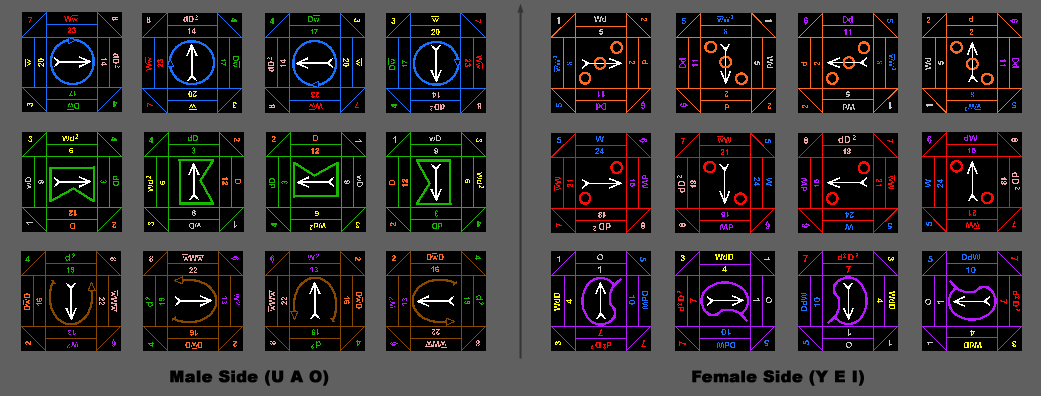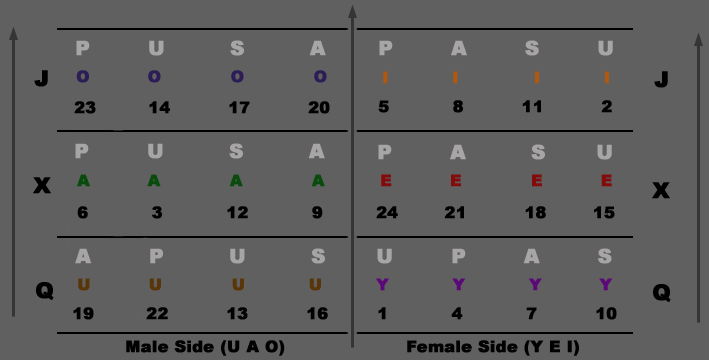We see from the minor turn type of Astralits previously discussed that this arrangement typically travels widdershins around either the immediate or remote point (depending upon whether the first minor turn is a d or w) of the first exact face on the tablock for the 12 male positions of the rational cradle & then deosil around the mediate or immediate point of the first female face for the remaining 12 to complete the sequence. Again, recall that the objective of an Integral Closed Astralit is to traverse all 24 positions or exact faces of the tablock without duplicating any exact face in the sequence.
When beginning an Integral Closed Astralit with a major turn, the arrangement is opposite that of the minor turn within a rational cradle. In this case we move widdershins around either the mediate or neoteric point (depending on whether the first major turn is a D or W) of the first exact face on the tablock for the male side of the cradle & then deosil around the immediate or remote point to continue with the female portion of the sequence. For example, here is an Integral Closed Astralit starting with a major turn from Prone A Vex (3142):

This type of major turn posture rule is a compliment to that of the minor turn rule. The distinction with a major turn being that a reflective change occurs in the vertical postures (Upright & Averse) from male to female side of the cradle while the horizontals (Prone & Supine) remain the same. Understanding of this "reflection" of Upright to Averse, or vice versa, is easily grasped by making a double minor turn of either sort on the tablock (d2 or w2), which reverses the vertical postures but leaves the horizontals unchanged. Here is the accompanying rational cradle for the above Integral Closed Astralit to further illustrate the vertical posture changes of this major turn rule:

Now, suppose that we want to reverse directions of our Integral Closed Astralit and instead travel deosil around the male side & widdershins for the female side of the rational cradle. From the first exact face of the male side or 0 position, we would then make a major turn D to begin the deosil around its immediate point followed by a d to yield the triple index of vowels needed for erecting the male side of the cradle. For the female side of the cradle we would make a major turn of W from its first exact face followed by a d to continue the sequence by moving widdershins around the neoteric point.
Note that we may also perform the same or reverse sequence for any one of the other corners of each exact face -giving us a total of 192 different possible Integral Closed Astralits: 2 directions x 4 corners x 24 exact faces. To demonstrate a major turn Integral Closed Astralit moving in this direction, here is a rational cradle starting with Averse U Vex (4286) turning deosil on the male side:

Here is the accompanying rational cradle for the above Integral Closed Astralit to show the Probite / Rebite posture changes of this major turn rule that occur when we reverse directions:

As shown above, another distinction of changing its beginning direction of movement from widdershins to deosil is that an Integral Closed Astralit of this type reverses the association of the two posture sequences (Probite & Rebite) for their respective male & female sides of the rational cradle. Thus we have Male-Rebite / Female-Probite postures in the cradle when beginning with a major turn moving deosil.
As an additional exercise, construct a Rational Cradle for the Integral Closed Astralit beginning with Averse A Vex (1234) moving deosil around the remote point (#4).